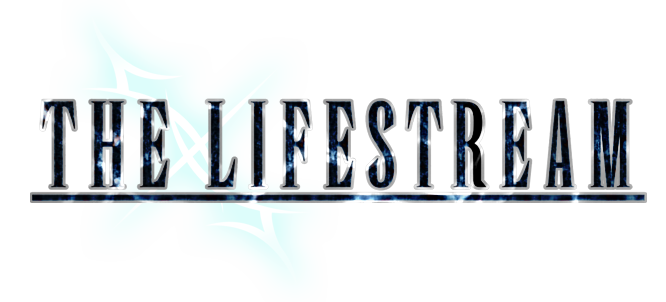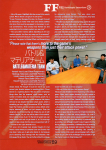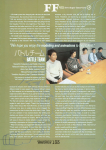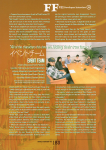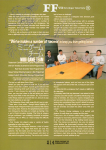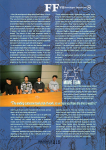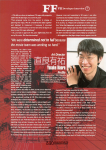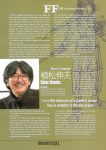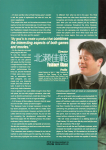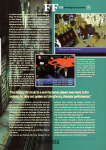TurquoiseHammer
Pro Adventurer
Included in this thread are English translations of staff interviews from the Final Fantasy VII Kaitai Shinsho Complete Guide (ファイナルファンタジーVII解体真書ザ・コンプリート, AKA "Dismantled"). The book was published March 24, 1997, and the interviews were conducted after the Japanese release of Final Fantasy VII (January 31, 1997). As such, these are some of the earliest staff interviews about Final Fantasy VII, and they contain valuable insight into when and how some of the story, systems, and techniques used in Final Fantasy VII took shape.
The guide contains nine interviews, the last of which takes up two pages instead of one. In cases where interviews were conducted with multiple respondents, the transcript is a combination of their (unattributed) responses. While this is a little annoying, you can usually infer who says what from the context. I've also included the Japanese text for readers' convenience.
Special thanks to do_it_again_chen at *cough* e-hentai dot org for uploading the original scans.
Thank you to Shinra Archaeology Department's @Obsidian Fire and @Cae Lumis for fielding questions about the content and providing text for the profiles and highlighted quotes.
Update 5/12/2022: @Odysseus has done the absolutely bonkers task of photoshopping these translations back onto the original Japanese pages. I've swapped out the pictures in this thread with his work. I've also updated the translations to incorporate the minor changes I made while proofreading them for Odysseus. Enjoy!
_________
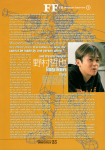
Tetsuya Nomura (Lead Character Designer)
Profile
Joined Square on April 16, 1991. Involved in the development of Final Fantasy V and on. Served multiple leading roles in the development of Final Fantasy VII, including Character Designer.
“We worked tirelessly to incorporate the perspectives of many different people. Final Fantasy is a series that cannot be made by one person alone.”
Q: Is there any sort of secret story behind how the characters of Final Fantasy VII came to be?
A: As a matter of fact, in the beginning we had only Aerith—there was no Tifa. Then one Sunday night I was on the phone with Director Kitase and suggested, “Let’s kill off Aerith and bring in Tifa” [laughs]. It wasn’t always the type of story where two heroines appear but one winds up dying.
Q: You mentioned that you were involved in other aspects of the project aside from character design.
A: I also came up with the basic premise for the story—stuff like who everyone is and what they’re trying to accomplish. I tried to think about the story context, such as Cloud being an ex-SOLDIER who chases after Sephiroth, in parallel with the character design. Those two plot elements—Cloud’s objective and the journey to find the Promised Land—served as the starting point for the entire story.
Q: You also had a hand in designing the game’s monsters, correct?
A: I collaborated with two other staff members on that. As we were designing the monsters, we also had to consider how they would attack, which was surprisingly difficult. The hardest of all was Yang, an enemy that appears in the basement of the Shinra Manor. We repeatedly went back to the drawing board in an attempt to make it more zombie-like. As a result of Yang’s exaggerated torpor, the battle became very time-consuming, and people complained [laughs]. Yang is just one of several rare monsters that appear only in specific places. I hope players will take the time to explore and seek them all out.
Q: Were there any other jobs you were placed in charge of?
A: I was also the one who created the limit break system. In the previous game, Final Fantasy VI, characters gained access to special skills when they were close to dying. However, perhaps because they appeared so rarely, players barely took notice of them. So, I tried to implement a more useful system this time around. The summoning magic had become very flashy looking, but the protagonists’ polygons could be moved with a lot of freedom as well, so I leveraged character animations to create spectacular limit breaks.
Q: Even just designing characters is a difficult task, but this time your involvement with Final Fantasy VII went well beyond that.
A: There was even more [laughs]. I also drew the storyboards for the summoning magic. After we successfully dealt with the animation where Titan peels up part of the ground, we were able to use that effect to raise enemies up [on a piece of earth] during Gigaflare.
Q: Which summoning magic would you say is your favorite?
A: That’s a tough one. They’re all pretty neat, but if I had to pick, I’d say Titan and Ifrit. Knights of the Round is also a good one. I expected it to be a long summon even from the beginning, and once it passed the one-minute mark, I figured I may as well go all out [laughs].
Q: Unlike with previous Final Fantasy games, it seems like the interpretation of this game’s ending varies from person to person.
A: That’s something we had in mind as we made it. Some people might think that the Northern Cave is the Promised Land, while others might say that any place rooted in the earth is the Promised Land. Personally, I’m of the opinion that Midgar is the Promised Land, based on the fact that it’s full of vegetation at the end, and it’s the place where Aerith—an Ancient—directs all that Lifestream. But I don’t know how Nojima, the lead scenario writer, would respond to that [laughs].
Q: Considering that it’s given rise to differing interpretations even among those who made it, this story sure does stimulate players’ imaginations.
A: That’s because it’s lovingly composed from over 100 different people’s ideas and perspectives. Historically, Final Fantasy games have always been made that way. All I’ll say is that you can’t produce a work of this caliber with one person alone.
__________
PROFILE
'91年4月16日、スクウェアに入社。『FFV』以降の開発に携わる。『FFVII』では、キャラクターデザインのほか、多数のパートを担当。
「多くの人の意見を惜しまずに投入した——『FF』はひとりでは作れない作品なんです」
Q: キャラクターが誕生するまでの隠されたエピソードのようなものはありますか?
A:「じつは、はじめはエアリスだけで、ティファはいなかったんです。ある日曜の夜、ディレクターの北瀬さんに電話で『エアリス殺しましょう、ティファ出しましょう』と提案しました(笑)。ヒロインがふたり登場し、片方が死んでしまうというタイプのものがなかったので」
Q: キャラクターデザイン以外のことにも関わっていらっしゃるとのお話ですが?
A:「ストーリーのベースとなる案も出しました。こいつは何者で何をしようとしているのか、とか。たとえば、クラウドは元ソルジャーでセフィロスを追っているなどの設定も、キャラクターデザインと平行して考えました。そういったクラウドの目的と、約束の地を求めて旅をする、というふたつの要素が最初にあって、それがストーリー全体のとっかかりになったんです」
Q: モンスターのデザインも手がけられているんですよね?
A:「ほかのふたりのスタッフと協カしてやりました。デザインと同時に、モンスターの攻撃方法なども考えなくてはならなかったので、思った以上に苦労しましたね。なかでも神羅屋敷の地下で登場するヤンは『もっとゾンビっぽくしてくれ』と何度もリティクを出されました。それで凝りまくった結果、あんなに戦闘時間が長くなってしまった、と(笑)。ヤンのほかにも、特定の場所で、しかも低確率でしか登場しないモンスターがいるので、プレイヤーの人たちには、歩きまわって探してほしいですね」
Q: 担当されたお仕事は、まだ他にも?
A:「リミットブレイクの設定もしました。前作の『VI』では、瀕死状態になると必殺技が出るようになっていたんです。でも、その確率が低いためか誰も気づいてくれなかったようなので、あれをもっと活かしてやろうと。召喚魔法があんなに派手になったうえに、主人公もポリゴンなので自由に動かせますから、キャラクターの動きで魅せる技ということを念頭に置いて設定したんです」
Q: キャラクターのデザインだけでも大変なのに、そこまで今回の『VII』に関わっていらっしゃるとは…。
A:「まだ、あります(笑)。召喚魔法のコンテも描きました。タイタンで地面を引きはがすという処理を実現できたことで、ギガフレアで敵を持ち上げるときの効果の表現が可能になったんです」
Q: お気に入りの召喚魔法はどれですか?
A:「むずかしいですね。どれもかなりイケているんで…。強いて挙げるならタイタンとイフリートかな。ナイツオブラウンドもいいですよね。最初から時間が長くなることは予想していたんですが。まあ1分の壁はすでに破ってましたから、もう心ゆくまでやってやろうと(笑)」
Q: エンディングがこれまでの『FF』とは異なり、人によって解釈が変わってくるように思われますか?
A:「それは意識してやりました。人によっては北の大空洞が約束の地だと考えるかもしれませんし、大地に根ざしたすべての場所が約束の地だと言う人もいるかもしれません。ただ個人的には、エンディングで緑が生い茂っている場面や、エアリス—つまり古代種がたくさんのライフストリームを導いているところから、ミッドガルが約束の地なのかなと考えています。シナリオ担当の野島さんがどう言うかはわかりませんけど(笑)」
Q: スタッフ間でも解釈のちがう部分が生まれるというのは、それだけプレイヤーに想像させる楽しみを与えるシナリオということなんでしょうね?
A:「100人以上の意見や思想が惜しげもなく投入されてますからね。今回にかぎらず、『FF』とは元来そういった作りかたをされてきた作品なんです。ひとつだけ言えるのは、これだけのクオリティの作品は、絶対にひとりの力では作り出せない、ということでしょうね」
The guide contains nine interviews, the last of which takes up two pages instead of one. In cases where interviews were conducted with multiple respondents, the transcript is a combination of their (unattributed) responses. While this is a little annoying, you can usually infer who says what from the context. I've also included the Japanese text for readers' convenience.
Special thanks to do_it_again_chen at *cough* e-hentai dot org for uploading the original scans.
Thank you to Shinra Archaeology Department's @Obsidian Fire and @Cae Lumis for fielding questions about the content and providing text for the profiles and highlighted quotes.
Update 5/12/2022: @Odysseus has done the absolutely bonkers task of photoshopping these translations back onto the original Japanese pages. I've swapped out the pictures in this thread with his work. I've also updated the translations to incorporate the minor changes I made while proofreading them for Odysseus. Enjoy!
_________

Tetsuya Nomura (Lead Character Designer)
Profile
Joined Square on April 16, 1991. Involved in the development of Final Fantasy V and on. Served multiple leading roles in the development of Final Fantasy VII, including Character Designer.
“We worked tirelessly to incorporate the perspectives of many different people. Final Fantasy is a series that cannot be made by one person alone.”
Q: Is there any sort of secret story behind how the characters of Final Fantasy VII came to be?
A: As a matter of fact, in the beginning we had only Aerith—there was no Tifa. Then one Sunday night I was on the phone with Director Kitase and suggested, “Let’s kill off Aerith and bring in Tifa” [laughs]. It wasn’t always the type of story where two heroines appear but one winds up dying.
Q: You mentioned that you were involved in other aspects of the project aside from character design.
A: I also came up with the basic premise for the story—stuff like who everyone is and what they’re trying to accomplish. I tried to think about the story context, such as Cloud being an ex-SOLDIER who chases after Sephiroth, in parallel with the character design. Those two plot elements—Cloud’s objective and the journey to find the Promised Land—served as the starting point for the entire story.
Q: You also had a hand in designing the game’s monsters, correct?
A: I collaborated with two other staff members on that. As we were designing the monsters, we also had to consider how they would attack, which was surprisingly difficult. The hardest of all was Yang, an enemy that appears in the basement of the Shinra Manor. We repeatedly went back to the drawing board in an attempt to make it more zombie-like. As a result of Yang’s exaggerated torpor, the battle became very time-consuming, and people complained [laughs]. Yang is just one of several rare monsters that appear only in specific places. I hope players will take the time to explore and seek them all out.
Q: Were there any other jobs you were placed in charge of?
A: I was also the one who created the limit break system. In the previous game, Final Fantasy VI, characters gained access to special skills when they were close to dying. However, perhaps because they appeared so rarely, players barely took notice of them. So, I tried to implement a more useful system this time around. The summoning magic had become very flashy looking, but the protagonists’ polygons could be moved with a lot of freedom as well, so I leveraged character animations to create spectacular limit breaks.
Q: Even just designing characters is a difficult task, but this time your involvement with Final Fantasy VII went well beyond that.
A: There was even more [laughs]. I also drew the storyboards for the summoning magic. After we successfully dealt with the animation where Titan peels up part of the ground, we were able to use that effect to raise enemies up [on a piece of earth] during Gigaflare.
Q: Which summoning magic would you say is your favorite?
A: That’s a tough one. They’re all pretty neat, but if I had to pick, I’d say Titan and Ifrit. Knights of the Round is also a good one. I expected it to be a long summon even from the beginning, and once it passed the one-minute mark, I figured I may as well go all out [laughs].
Q: Unlike with previous Final Fantasy games, it seems like the interpretation of this game’s ending varies from person to person.
A: That’s something we had in mind as we made it. Some people might think that the Northern Cave is the Promised Land, while others might say that any place rooted in the earth is the Promised Land. Personally, I’m of the opinion that Midgar is the Promised Land, based on the fact that it’s full of vegetation at the end, and it’s the place where Aerith—an Ancient—directs all that Lifestream. But I don’t know how Nojima, the lead scenario writer, would respond to that [laughs].
Q: Considering that it’s given rise to differing interpretations even among those who made it, this story sure does stimulate players’ imaginations.
A: That’s because it’s lovingly composed from over 100 different people’s ideas and perspectives. Historically, Final Fantasy games have always been made that way. All I’ll say is that you can’t produce a work of this caliber with one person alone.
__________
PROFILE
'91年4月16日、スクウェアに入社。『FFV』以降の開発に携わる。『FFVII』では、キャラクターデザインのほか、多数のパートを担当。
「多くの人の意見を惜しまずに投入した——『FF』はひとりでは作れない作品なんです」
Q: キャラクターが誕生するまでの隠されたエピソードのようなものはありますか?
A:「じつは、はじめはエアリスだけで、ティファはいなかったんです。ある日曜の夜、ディレクターの北瀬さんに電話で『エアリス殺しましょう、ティファ出しましょう』と提案しました(笑)。ヒロインがふたり登場し、片方が死んでしまうというタイプのものがなかったので」
Q: キャラクターデザイン以外のことにも関わっていらっしゃるとのお話ですが?
A:「ストーリーのベースとなる案も出しました。こいつは何者で何をしようとしているのか、とか。たとえば、クラウドは元ソルジャーでセフィロスを追っているなどの設定も、キャラクターデザインと平行して考えました。そういったクラウドの目的と、約束の地を求めて旅をする、というふたつの要素が最初にあって、それがストーリー全体のとっかかりになったんです」
Q: モンスターのデザインも手がけられているんですよね?
A:「ほかのふたりのスタッフと協カしてやりました。デザインと同時に、モンスターの攻撃方法なども考えなくてはならなかったので、思った以上に苦労しましたね。なかでも神羅屋敷の地下で登場するヤンは『もっとゾンビっぽくしてくれ』と何度もリティクを出されました。それで凝りまくった結果、あんなに戦闘時間が長くなってしまった、と(笑)。ヤンのほかにも、特定の場所で、しかも低確率でしか登場しないモンスターがいるので、プレイヤーの人たちには、歩きまわって探してほしいですね」
Q: 担当されたお仕事は、まだ他にも?
A:「リミットブレイクの設定もしました。前作の『VI』では、瀕死状態になると必殺技が出るようになっていたんです。でも、その確率が低いためか誰も気づいてくれなかったようなので、あれをもっと活かしてやろうと。召喚魔法があんなに派手になったうえに、主人公もポリゴンなので自由に動かせますから、キャラクターの動きで魅せる技ということを念頭に置いて設定したんです」
Q: キャラクターのデザインだけでも大変なのに、そこまで今回の『VII』に関わっていらっしゃるとは…。
A:「まだ、あります(笑)。召喚魔法のコンテも描きました。タイタンで地面を引きはがすという処理を実現できたことで、ギガフレアで敵を持ち上げるときの効果の表現が可能になったんです」
Q: お気に入りの召喚魔法はどれですか?
A:「むずかしいですね。どれもかなりイケているんで…。強いて挙げるならタイタンとイフリートかな。ナイツオブラウンドもいいですよね。最初から時間が長くなることは予想していたんですが。まあ1分の壁はすでに破ってましたから、もう心ゆくまでやってやろうと(笑)」
Q: エンディングがこれまでの『FF』とは異なり、人によって解釈が変わってくるように思われますか?
A:「それは意識してやりました。人によっては北の大空洞が約束の地だと考えるかもしれませんし、大地に根ざしたすべての場所が約束の地だと言う人もいるかもしれません。ただ個人的には、エンディングで緑が生い茂っている場面や、エアリス—つまり古代種がたくさんのライフストリームを導いているところから、ミッドガルが約束の地なのかなと考えています。シナリオ担当の野島さんがどう言うかはわかりませんけど(笑)」
Q: スタッフ間でも解釈のちがう部分が生まれるというのは、それだけプレイヤーに想像させる楽しみを与えるシナリオということなんでしょうね?
A:「100人以上の意見や思想が惜しげもなく投入されてますからね。今回にかぎらず、『FF』とは元来そういった作りかたをされてきた作品なんです。ひとつだけ言えるのは、これだけのクオリティの作品は、絶対にひとりの力では作り出せない、ということでしょうね」
Last edited:
